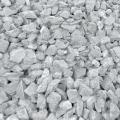How to calculate the volume of crushed stone?
The most popular materials during construction are cement, sand and crushed stone. Therefore, it is necessary to constantly calculate their expected consumption. A person who is faced with such a need for the first time, while searching for information about this on the Internet, is faced with hair-raising formulas. In fact, everything is much simpler.
Important factors that influence the calculation
There are factors that can significantly affect the calculations. They are associated with the characteristics of the crushed stone itself. Directly during calculations, they are taken into account by design firms and large construction companies that draw up large-scale estimates. It is enough for a private developer to know the potential causes of errors in order to avoid them.
- Flakiness. One of the most important characteristics of crushed stone, which is important when mixing concrete. The compaction coefficient depends on it: the higher the flakiness, the lower it will be.
- True density. Different types of stone naturally have different densities. Their weight can vary greatly. For example, a cubic meter of granite is 2.6 tons, and limestone is only 1.8 tons.
- Fraction size. The smaller the grain of the stone, the more of it will fit into the same volume. For example, for a fraction of 5–20 mm the weight of one cubic meter is 1,360 kg, but for a larger fraction of 40–70 mm it is already 1,320 kg. But in relative terms the difference is small.
- Moisture absorption. This indicator depends on the size of the fraction and the porosity of the rock from which the crushed stone was extracted.
What is taken into account in the calculations
- The thickness of the crushed stone layer that needs to be filled.
- Total area of work (structures or roads).
- Specific gravity of crushed stone.
- Compaction factor.
The last indicator (compaction factor) is 1.3 by default. Essentially, it shows how much crushed stone can be compacted with a vibrating plate or roller.

The specific gravity or bulk density of crushed stone is indicated in the product certificate. In its absence, you need to focus on the average indicators for this type. The bulk density is significantly less than the true one, since it is calculated without taking into account the cavities between the grains of the stone.
Calculation for the foundation
It's very simple. First you need to determine how much crushed stone is needed per cubic meter. It is known that the thickness of the layer should be at least 20 cm. Thus, the required volume is obtained using the formula familiar from childhood: we multiply the latitude by the length and height, that is, in this case 1 m x 1 m x 0.2 m = 0.2 m 3.
The result obtained must be multiplied by the specific gravity of crushed stone and the same compaction coefficient. In our case, 0.2 m 3 x 1.47 t (for crushed granite) x 1.3 = 0.382 m 3. This is the material consumption for one cubic meter of foundation. Multiply this value by the total area of the foundation. This way you will know the exact amount of crushed stone that will be needed to create the entire structure.

Calculation for pavement
You can find out the required amount of crushed stone for road construction using the same formula. There will be only one difference in the formula - the thickness of the layer. Here you will need only 15 cm, which means the volume will be 0.15 m3. Accordingly, the costs will be 0.15 m 3 x 1.47 t (for the same crushed stone) x 1.3 = 2.87 m 3.
The error in the calculations is minimal. Therefore, builders and developers prefer to use this formula to calculate the amount of necessary materials for small objects.
 Construction materials and list of works
Construction materials and list of works Proper insulation of a wooden ceiling in a private house
Proper insulation of a wooden ceiling in a private house What types of crushed stone are there?
What types of crushed stone are there?